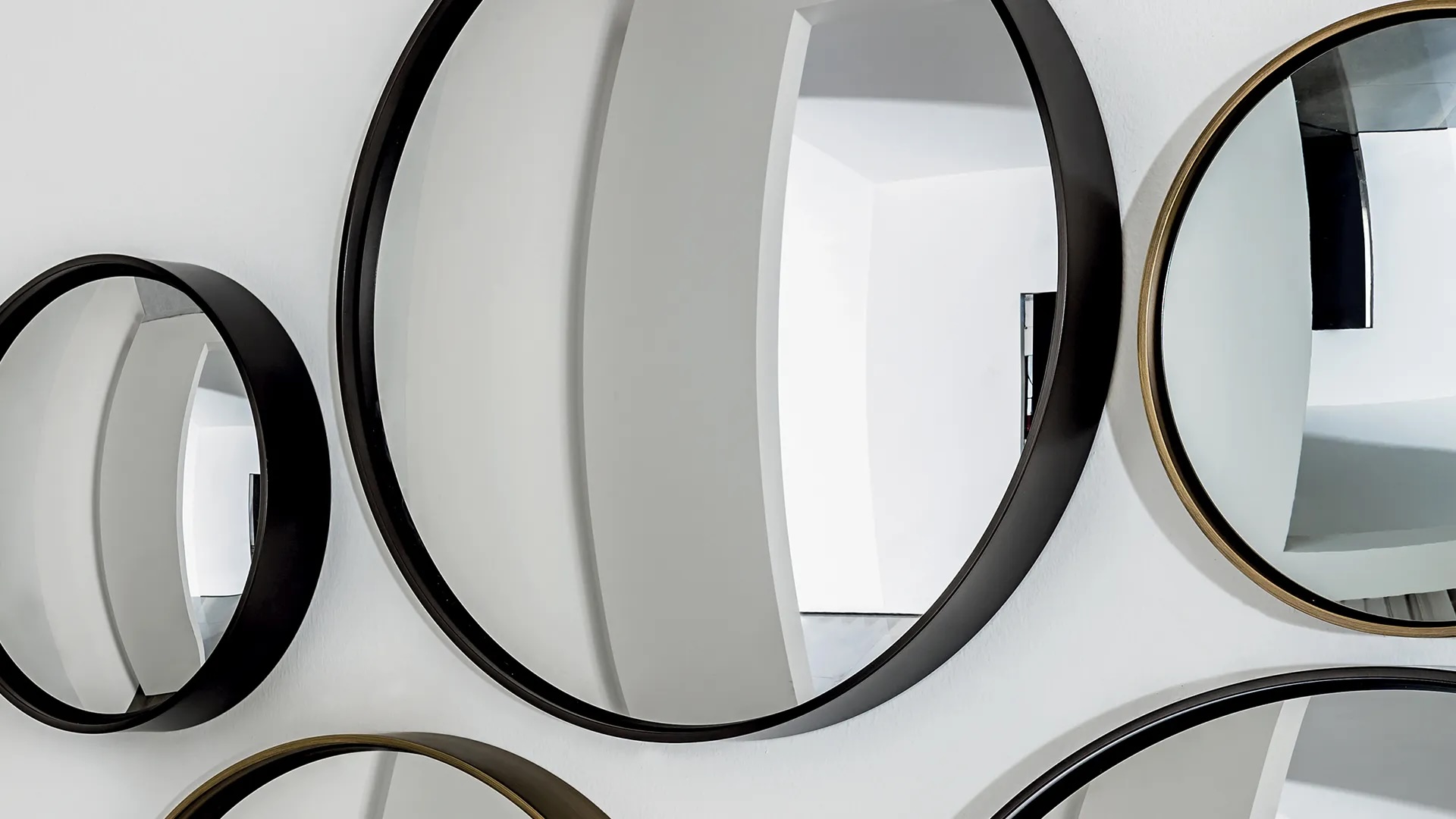

Articles
How Do Concave And Convex Mirrors Work
Modified: October 20, 2024
Learn how concave and convex mirrors work in this informative article. Explore the principles of optics and discover the fascinating properties of these types of mirrors.
(Many of the links in this article redirect to a specific reviewed product. Your purchase of these products through affiliate links helps to generate commission for Storables.com, at no extra cost. Learn more)
Introduction
A mirror is a common object that we use every day, whether it’s to check our appearance or to reflect light in a room. Mirrors come in different shapes and sizes, but two types that are often talked about are concave and convex mirrors. These mirrors have distinct characteristics and serve different purposes, making them fascinating subjects to explore.
In this article, we will delve into the world of concave and convex mirrors, discussing their definitions, characteristics, how they work, and their various applications. By understanding the fundamentals of these mirrors, we can gain a deeper appreciation for their functionality and practical uses.
So, let’s dive in and unravel the intriguing mysteries of concave and convex mirrors!
Key Takeaways:
- Concave mirrors focus light to create real or virtual images, magnify objects, and find applications in telescopes, medical examinations, and makeup mirrors, showcasing their versatility and practicality.
- Convex mirrors provide a wider field of view, produce virtual, diminished images, and enhance safety in traffic, surveillance, and retail security, demonstrating their value in improving visibility and security.
Read more: How Do Infinity Mirrors Work
Definition of Concave and Convex Mirrors
Before we delve deeper into the workings of concave and convex mirrors, let’s first understand their definitions.
A concave mirror, also known as a converging mirror, is a reflective surface that bulges inward, resembling a cave or a bowl. It is curved inwards and has a reflective coating on the outer surface. The inner surface, or the concave side, is responsible for the reflection of light.
On the other hand, a convex mirror, also known as a diverging mirror, is curved outward, resembling a hill or a spoon. It has a reflective coating on the outer surface, just like a concave mirror. However, unlike a concave mirror, its outer surface is responsible for the reflection of light.
Both concave and convex mirrors have unique properties that make them distinct in terms of their reflection capabilities and usage.
Now that we have a clear understanding of concave and convex mirrors, let’s explore their characteristics and how they work.
Concave Mirrors
Concave mirrors are fascinating optical devices that have a variety of characteristics and applications. Let’s take a closer look at them.
Characteristics of Concave Mirrors:
- Concave mirrors have a reflective surface that curves inward, causing light rays to converge at a single point known as the focal point.
- The distance between the focal point and the mirror’s surface is called the focal length.
- They can produce both real and virtual images depending on the object’s position relative to the focal point.
- Concave mirrors can magnify objects, making them appear larger than their actual size.
How Concave Mirrors Work:
Concave mirrors work based on the principle of reflection. When light rays hit the concave surface, they reflect inwards, converging at the focal point. This convergence creates an image that can be real or virtual, depending on the object’s position.
Real images are formed when the object is placed beyond the focal point, and the reflected rays converge to form an actual image on a screen. Virtual images are formed when the object is placed between the focal point and the mirror, and the reflected rays appear to diverge from the mirror, creating an image that cannot be projected onto a screen.
Applications of Concave Mirrors:
- Concave mirrors are used in telescopes to collect and focus light, allowing us to observe distant celestial objects.
- In the medical field, concave mirrors are used in mirrorscope examinations, which help doctors visualize and examine body cavities.
- They are commonly found in makeup mirrors, providing magnification for precise grooming and application of cosmetics.
Concave mirrors have a wide range of applications, thanks to their ability to reflect and focus light. Now that we understand concave mirrors, let’s move on to their counterpart, the convex mirrors.
Concave Mirrors
– Characteristics of Concave Mirrors
Concave mirrors possess unique characteristics that set them apart from other optical devices. Let’s explore some of these distinctive traits:
1. Focal Point: One of the key characteristics of concave mirrors is the presence of a focal point. The focal point is a single point on the principal axis of the mirror where parallel rays of light converge after reflection. It is located halfway between the center of curvature and the mirror’s vertex.
2. Focal Length: The distance between the focal point and the vertex of the mirror is known as the focal length. It determines the magnification and the field of view of the reflected image. Concave mirrors typically have shorter focal lengths compared to convex mirrors.
3. Magnification: Concave mirrors have the ability to magnify objects. When an object is placed beyond the focal point, a real and magnified image is formed. This property makes concave mirrors useful in applications where detailed observation and scrutiny are required.
4. Reflection: The inwardly curved shape of concave mirrors causes light rays to converge towards the focal point, resulting in reflection. The angle of incidence is equal to the angle of reflection, following the law of reflection.
5. Divergence: While concave mirrors are known for their converging properties, they are also capable of producing virtual images when the object is placed closer to the mirror than the focal point. In this case, the reflected rays appear to diverge, giving a virtual, upright, and diminished image.
Understanding the characteristics of concave mirrors is crucial in comprehending their functioning and practical applications. Now, let’s delve further into how concave mirrors work.
Concave Mirrors
– How Concave Mirrors Work
Concave mirrors work based on the principle of reflection. When a beam of light strikes a concave mirror, it undergoes reflection and behaves according to the shape and curvature of the mirror surface.
Here is how concave mirrors work:
1. Convergence of Light Rays: The inward curvature of concave mirrors causes incoming parallel rays of light to converge or come together. These rays reflect off the mirror surface and meet at a specific point known as the focal point. The focal point is located halfway between the mirror’s center of curvature and its vertex.
2. Formation of Real and Virtual Images: Depending on the object’s position relative to the focal point, concave mirrors can produce both real and virtual images. When an object is placed beyond the focal point, real images are formed on a screen or surface. These images are inverted and can be captured. On the other hand, when an object is placed between the focal point and the mirror, virtual images are formed. Virtual images are upright, magnified, and cannot be projected or captured on a screen.
3. Magnification: Concave mirrors have the unique ability to magnify objects. This magnification occurs when the object is placed beyond the focal point. The converging light rays result in an enlarged image, making details appear larger and more pronounced.
4. Field of View: The field of view is the extent of the area that is visible through the mirror. The size of the field of view in a concave mirror is determined by its focal length. Mirrors with shorter focal lengths provide a larger field of view, while those with longer focal lengths offer a narrower field of view.
By understanding how concave mirrors work, we can appreciate their ability to collect and focus light, resulting in various practical applications. Let’s explore some of these applications in the next section.
Concave Mirrors
– Applications of Concave Mirrors
Concave mirrors have a wide range of applications in various fields due to their unique properties and abilities. Let’s explore some of the common applications of concave mirrors:
1. Telescopes: One of the most significant applications of concave mirrors is in telescopes. The curved shape of concave mirrors allows them to collect and focus light from distant celestial objects. By reflecting and converging light onto a focal point, concave mirrors help astronomers observe and study stars, planets, and other astronomical phenomena.
2. Reflective Telescopes: Concave mirrors are also used in reflective telescopes, where light is collected by a primary concave mirror and reflected onto a smaller, angled flat mirror called a secondary mirror. This design allows for compact telescopes and efficient light gathering.
3. Mirrorscopes: In the medical field, concave mirrors play a role in minimally invasive procedures. Mirrorscopes are medical instruments that incorporate a concave mirror to generate an illuminated view of internal body organs and cavities. This technique helps doctors visualize and perform procedures without the need for invasive surgeries.
4. Makeup and Grooming: Concave mirrors are commonly found in makeup and grooming applications, such as vanity mirrors. The magnifying properties of concave mirrors allow for detailed close-up inspection, facilitating precise makeup application, eyebrow grooming, and other personal grooming tasks.
5. Solar Concentrators: Concave mirrors are used in solar concentrators to focus sunlight onto a receiver, optimizing the collection of solar energy. This technique enhances the efficiency of solar power generation and is utilized in solar thermal power plants and solar cookers.
6. Projectors and Spotlights: Concave mirrors are used in projectors and spotlights to redirect and focus light beams. By shaping and directing the light, concave mirrors help create sharp and well-defined images or concentrated beams of light for various applications, including movie projectors, stage lighting, and laser shows.
These are just a few examples of the diverse applications of concave mirrors. Their unique properties make them indispensable in several scientific, medical, cosmetic, and energy-related fields.
Now that we have explored the characteristics and applications of concave mirrors, let’s move on to understanding their counterpart, convex mirrors.
Read more: How Do Two-Way Mirrors Work
Convex Mirrors
Convex mirrors are intriguing optical devices that possess distinct characteristics and applications. Let’s delve into the world of convex mirrors and explore their fascinating properties.
Characteristics of Convex Mirrors:
Convex mirrors have the following notable characteristics:
- Outward Curvature: Unlike concave mirrors, convex mirrors feature a curved surface that bulges outward. The reflective coating is on the outer surface of the mirror, opposite to the concave mirrors.
- Wide Field of View: Convex mirrors provide a wide field of view due to their outward curvature. This property enables a broader view of the surroundings but sacrifices magnification.
- Virtual Image Formation: Convex mirrors always produce virtual images, regardless of the object’s position. The virtual image formed by a convex mirror is virtual, upright, diminished, and located behind the mirror.
- Reflective Angle: The angle of reflection from a convex mirror is always smaller than the angle of incidence. This characteristic causes light rays to diverge, making the reflected image appear smaller than the actual object.
- Enhanced Safety: The wide-angle view provided by convex mirrors makes them useful for improving safety and reducing blind spots in roadways, parking lots, and intersections.
How Convex Mirrors Work:
Convex mirrors work based on the principle of reflection, just like concave mirrors. When light rays hit the curved surface of a convex mirror, they reflect outward in various directions. However, they appear to diverge as if originating from one point behind the mirror.
This divergence of light rays gives rise to a virtual image that is smaller, upright, and located behind the mirror. Due to their wide field of view, convex mirrors allow for a broader perception of objects and surroundings, making them useful in surveillance and safety applications.
Applications of Convex Mirrors:
Convex mirrors have a wide range of practical applications due to their unique characteristics. Some common applications of convex mirrors include:
- Automotive Side Mirrors: Convex mirrors are commonly used as side mirrors in vehicles. They provide a wider field of view, allowing drivers to see objects and vehicles approaching from the side, reducing blind spots.
- Roadway Safety: Convex mirrors are strategically placed on roadways, parking lots, and driveways to enhance safety by providing a wider angle of view and minimizing blind spots.
- Security and Surveillance: The wide field of view offered by convex mirrors is valuable in security and surveillance applications. They are commonly used in stores, warehouses, and public spaces to monitor areas and deter theft or unwanted activities.
- Decorative and Architectural: Convex mirrors are also popular for their aesthetic appeal and decorative purposes. They can add visual interest to interior design and architecture, creating a unique and intriguing focal point.
Convex mirrors play a vital role in various industries and everyday life, offering improved safety, enhanced visibility, and practical functionality.
Now that we have explored the characteristics and applications of convex mirrors, let’s compare the differences between concave and convex mirrors.
Read more: How Do Two-Way Mirrors Work
Convex Mirrors
– Characteristics of Convex Mirrors
Convex mirrors possess unique characteristics that distinguish them from other types of mirrors. Let’s dive into the key characteristics of convex mirrors:
1. Outward Curvature: The most distinguishing characteristic of convex mirrors is their outward curvature. The mirror surface bulges outwards, giving it a distinctive shape resembling the exterior of a sphere. This curvature is responsible for the unique reflection properties of convex mirrors.
2. Wide Field of View: Convex mirrors provide a wide field of view due to their curvature. The outward shape enables them to reflect a larger area, allowing for a broader range of vision compared to other mirrors. This wide-angle view is particularly useful in applications where a broader perspective is necessary, such as in safety and surveillance.
3. Virtual Image Formation: Convex mirrors always produce virtual images, regardless of the position of the object. Virtual images are formed when the reflected rays of light appear to diverge rather than converging like they do in concave mirrors. These virtual images are upright, diminished, and located behind the mirror.
4. Reflective Angle: The angle of reflection from a convex mirror is always smaller than the angle of incidence. This characteristic causes the reflected light rays to diverge, effectively spreading out the image. As a result, the reflected image appears smaller than the actual object.
5. Safety Enhancement: Convex mirrors are commonly used for safety enhancement purposes. The wide field of view provided by convex mirrors helps eliminate blind spots and improve visibility in various settings, such as roads, parking lots, and intersections. They enhance safety by allowing better monitoring of surrounding objects and potential hazards.
Understanding the characteristics of convex mirrors is essential in recognizing their functionality and practical applications. In the next section, let’s explore how convex mirrors work and the applications they find in various fields.
Read more: How Do Two-Way Mirrors Work
Convex Mirrors
– How Convex Mirrors Work
Convex mirrors function based on the principle of reflection and their unique curved shape. Understanding how convex mirrors work will provide insights into their optical properties and applications.
Here is an overview of how convex mirrors work:
1. Outward Curvature: Convex mirrors have a curved shape that bulges outward. This curvature causes incoming light rays to diverge or spread out after reflecting off the mirror’s surface.
2. Divergence of Light Rays: When a beam of light strikes a convex mirror, the curved surface causes the light rays to reflect in various directions. Unlike concave mirrors, which converge light rays towards a focal point, convex mirrors disperse light rays outward.
3. Formation of Virtual Images: Due to the outward shape and resultant divergence of light, convex mirrors always produce virtual images. A virtual image is an image formed by the apparent intersection of light rays. In the case of convex mirrors, the virtual image appears to be located behind the mirror, appearing smaller, upright, and diminished.
4. Wide Field of View: The outward curvature of convex mirrors allows for a wider field of view compared to flat or concave mirrors. This broad perspective makes convex mirrors suitable for applications where a larger area needs to be observed, such as in traffic mirrors or surveillance systems.
5. Reflective Angle: The angle of reflection from a convex mirror is always smaller than the angle of incidence. This characteristic causes the reflected light rays to spread out, creating a wider image. As a result, the reflected image appears smaller than the actual object and gives a wider view of the surroundings.
Convex mirrors effectively increase the field of view and provide a broader perspective, making them valuable in various applications. Now, let’s explore the practical applications where convex mirrors are commonly used.
Read more: How Do Two-Way Mirrors Work
Convex Mirrors
– Applications of Convex Mirrors
Convex mirrors have a wide range of practical applications due to their unique properties and characteristics. Let’s explore some of the common applications where convex mirrors are widely used:
1. Traffic Safety: Convex mirrors play a vital role in enhancing road safety. They are commonly installed at intersections, parking lots, and curved roads to eliminate blind spots and help drivers see oncoming traffic and pedestrians. Convex mirrors provide a wider field of view, allowing for better visibility and improved accident prevention.
2. Surveillance Systems: The wide-angle view offered by convex mirrors makes them useful in surveillance systems. They are commonly used as domed security mirrors in stores, banks, offices, and public spaces, allowing for a broader observation of the surroundings and reducing blind spots.
3. Retail and Store Security: Convex mirrors are often utilized in retail stores to deter shoplifting and monitor areas that are not easily visible. They help minimize theft and keep a watchful eye on the store layout, improving security and loss prevention efforts.
4. Industrial and Warehouse Safety: Convex mirrors are valuable in industrial environments and warehouses. They assist in enhancing safety by providing employees with a wider view of their surroundings, facilitating the detection of potential hazards, and preventing accidents.
5. Decorative and Aesthetic: Convex mirrors are also valued for their decorative and aesthetic qualities. They are often used in interior design and architecture to create visually appealing spaces. The unique shape and reflection of convex mirrors add a touch of elegance and intrigue, making them a popular choice for decorative purposes.
6. Rearview and Sideview Mirrors: Convex mirrors are commonly used as side mirrors and wide-angle rearview mirrors in vehicles. These mirrors provide a wider field of view, allowing drivers to see objects and vehicles that may be in blind spots, improving overall safety on the road.
7. Panoramic View: Convex mirrors are also employed to create panoramic views in various settings. They are used in recreational and scenic areas, museums, and exhibition halls, providing an immersive and broader perspective of the surroundings.
The unique characteristics of convex mirrors make them suitable for multiple applications, enhancing safety, security, and visual aesthetics. Now, let’s summarize the differences between concave and convex mirrors.
Comparison of Concave and Convex Mirrors
Concave and convex mirrors are two distinct types of mirrors with different shapes, properties, and applications. Let’s compare the key differences between concave and convex mirrors:
Shape:
- Concave mirrors have an inwardly curved shape, resembling a cave or a bowl.
- Convex mirrors have an outwardly curved shape, resembling a hill or a spoon.
Reflection:
- Concave mirrors reflect light inward, causing rays to converge at a focal point.
- Convex mirrors reflect light outward, causing rays to diverge as if originating from a virtual focal point.
Image Formation:
- Concave mirrors can produce both real and virtual images, depending on the object’s position relative to the focal point.
- Convex mirrors always produce virtual images that are smaller, upright, and located behind the mirror.
Field of View:
- Concave mirrors have a relatively narrow field of view due to their inward curvature.
- Convex mirrors have a wider field of view due to their outward curvature, allowing for a broader perspective.
Magnification:
- Concave mirrors can magnify objects when placed beyond the focal point, creating larger and more detailed images.
- Convex mirrors have a diminishing effect on the reflected image, making objects appear smaller in size compared to the actual object.
Applications:
- Concave mirrors find applications in telescopes, mirrorscopes for medical examinations, makeup mirrors, and more.
- Convex mirrors are commonly used in traffic safety, surveillance systems, retail security, vehicle side mirrors, and decorative purposes.
While both concave and convex mirrors have their unique properties and applications, they serve different purposes due to their differing shapes and reflective properties. Concave mirrors focus light and can create real or virtual images, while convex mirrors provide a wide field of view and produce virtual, diminished images.
By understanding the distinctions between concave and convex mirrors, we gain a deeper appreciation for their functionality, making them indispensable in various fields.
I hope this article has provided you with a comprehensive understanding of concave and convex mirrors, their characteristics, and applications. Whether it’s focusing light or providing a wider perspective, these mirrors play a crucial role in our everyday lives, offering practicality, safety, and visual enhancements.
So, the next time you look into a mirror, take a moment to appreciate the intricate workings of concave and convex mirrors and the wonders they bring to our world.
Concave mirrors converge light rays to a focal point, creating real or virtual images. Convex mirrors diverge light rays, producing virtual, upright, and diminished images.
Conclusion
Concave and convex mirrors are fascinating optical devices that possess unique characteristics and serve distinct purposes. These mirrors, with their curved shapes and reflective properties, play a significant role in various fields and applications.
Concave mirrors, with their inward curvature, can focus light and create real or virtual images depending on the object’s position. They find applications in telescopes, mirrorscopes, makeup mirrors, and more. Concave mirrors are valued for their ability to magnify objects and provide detailed observations.
On the other hand, convex mirrors, with their outward curvature, provide a wider field of view and produce virtual, diminished images. They enhance safety in traffic situations, are used in surveillance systems, retail security, and as vehicle side mirrors. Convex mirrors offer a broader perspective, allowing for better observation of surroundings and minimizing blind spots.
Whether it’s enabling us to see distant celestial objects, improving road safety, or enhancing the aesthetics of our surroundings, concave and convex mirrors contribute to our lives in various ways.
By understanding the distinct characteristics and applications of concave and convex mirrors, we can appreciate their functionality and the impact they have in fields such as science, medicine, transportation, security, and more. These mirrors demonstrate the wonders of light reflection and how it can be harnessed to shape our visual experiences.
So, the next time you come across a mirror, take a moment to marvel at its shape and the way it reflects light. Whether it’s a concave mirror magnifying a distant star or a convex mirror providing a wider view of the road, be reminded of how these seemingly simple objects contribute to our understanding and interaction with the world around us.
Concave and convex mirrors are truly remarkable inventions, showcasing the harmonious relationship between science and human ingenuity. As we continue to explore and innovate, let us never lose sight of the extraordinary qualities and applications of these remarkable optical devices.
Frequently Asked Questions about How Do Concave And Convex Mirrors Work
Was this page helpful?
At Storables.com, we guarantee accurate and reliable information. Our content, validated by Expert Board Contributors, is crafted following stringent Editorial Policies. We're committed to providing you with well-researched, expert-backed insights for all your informational needs.

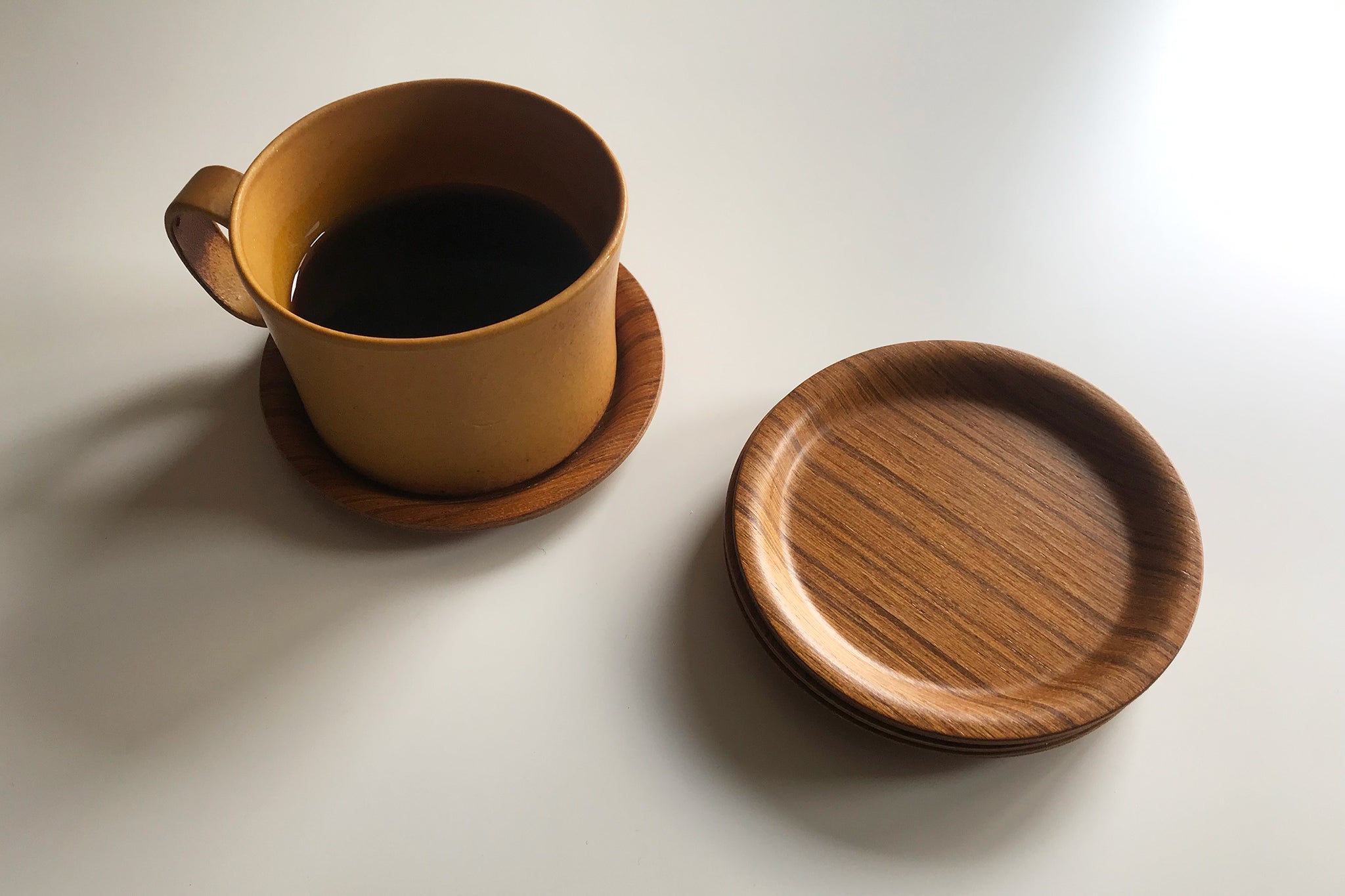
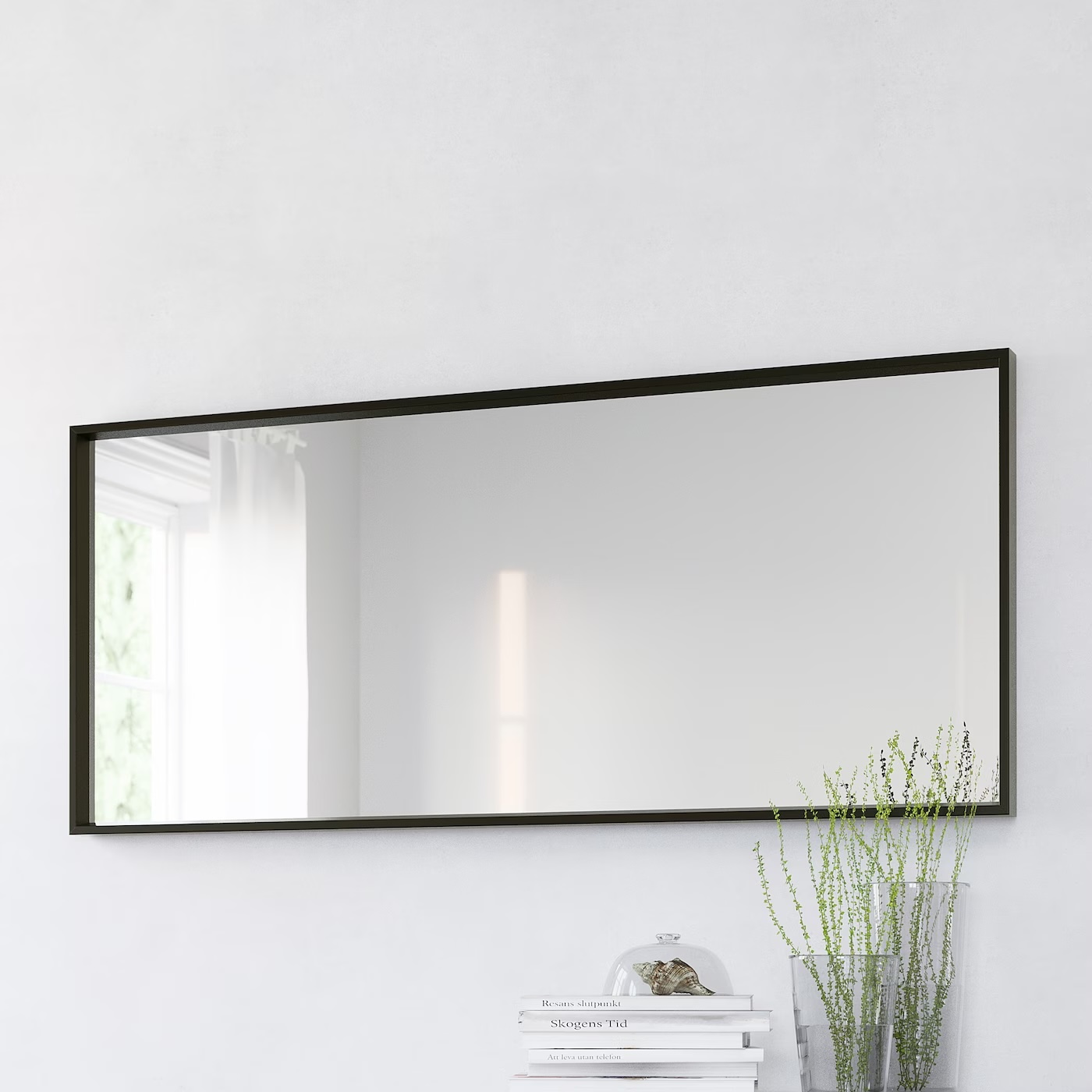

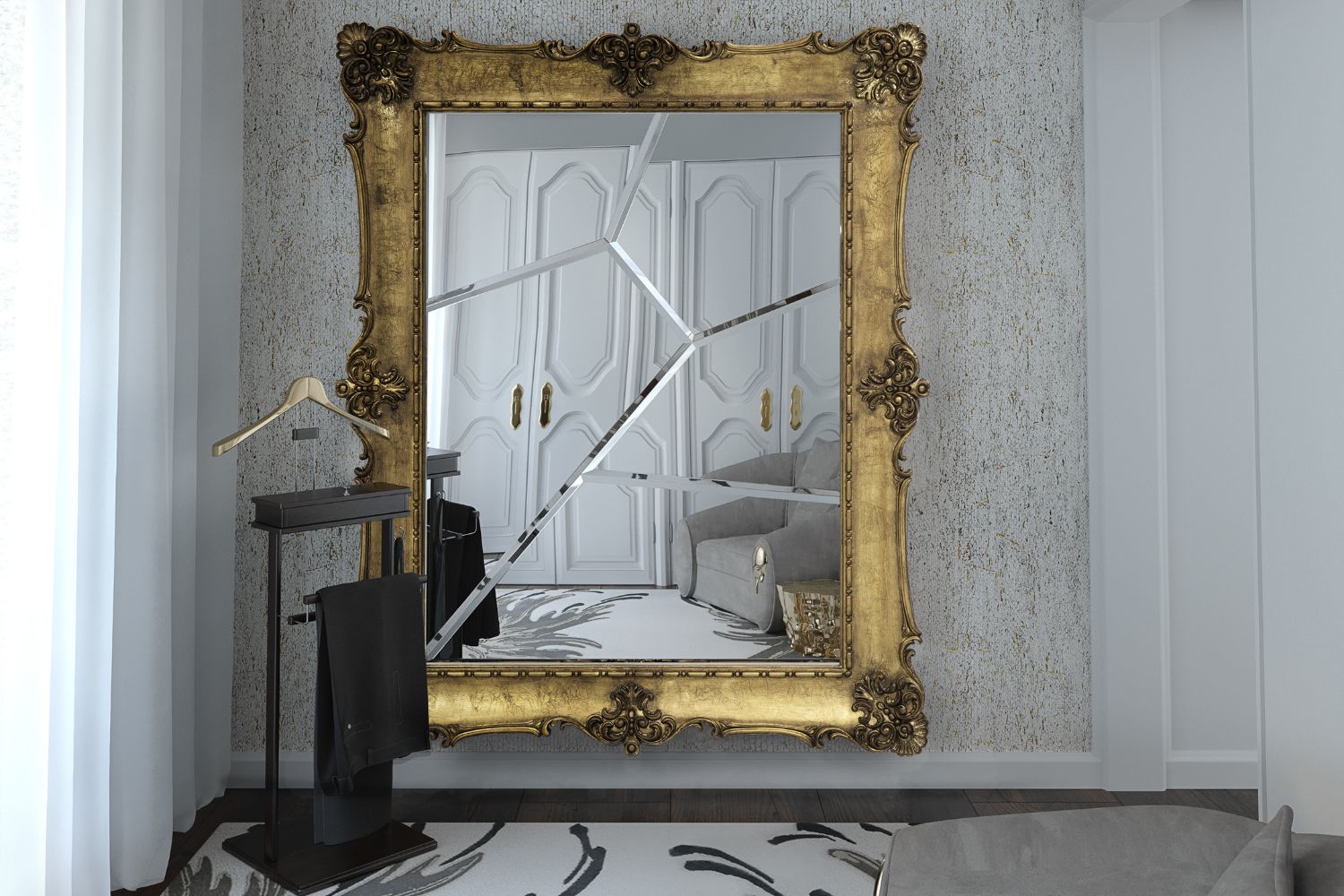
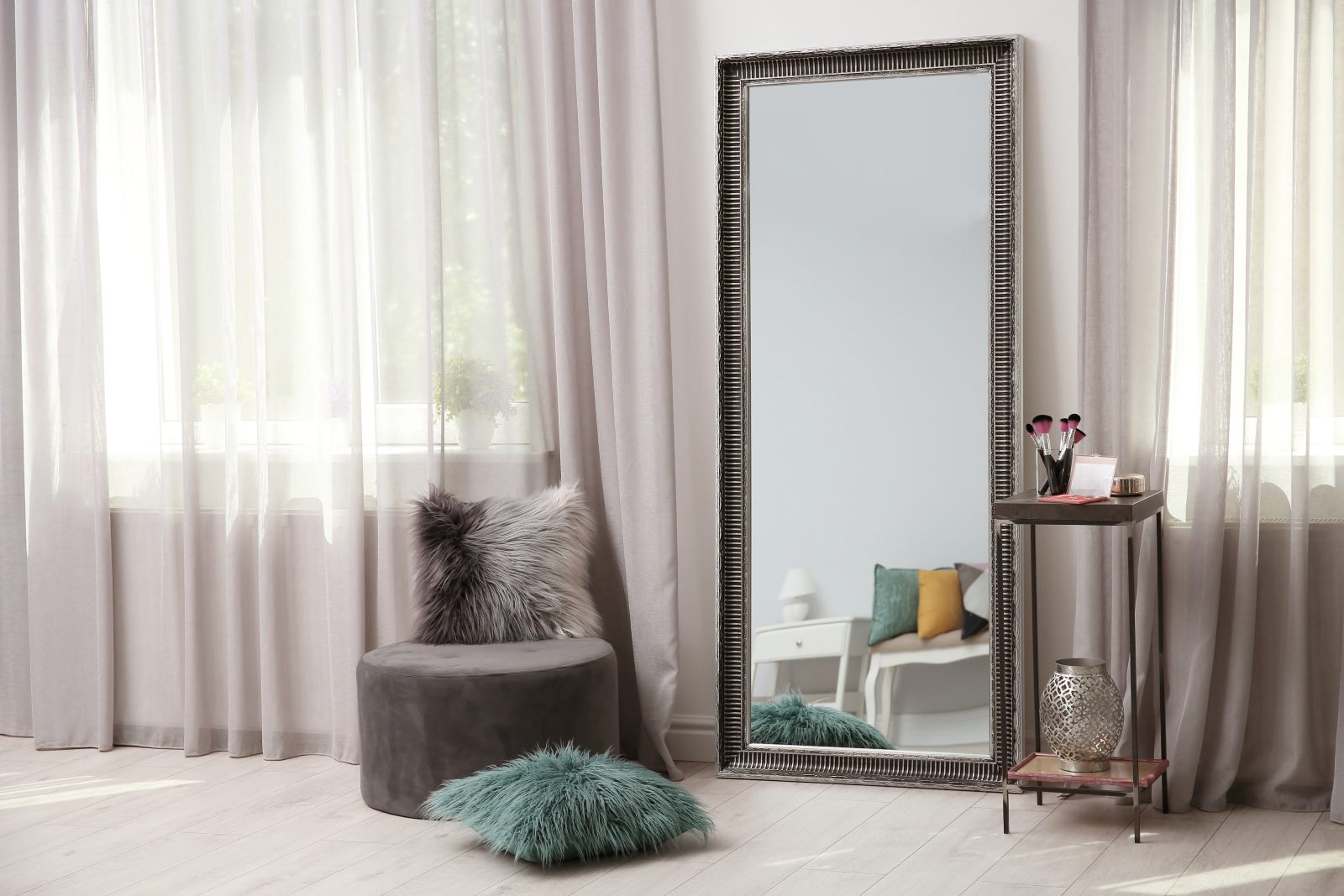

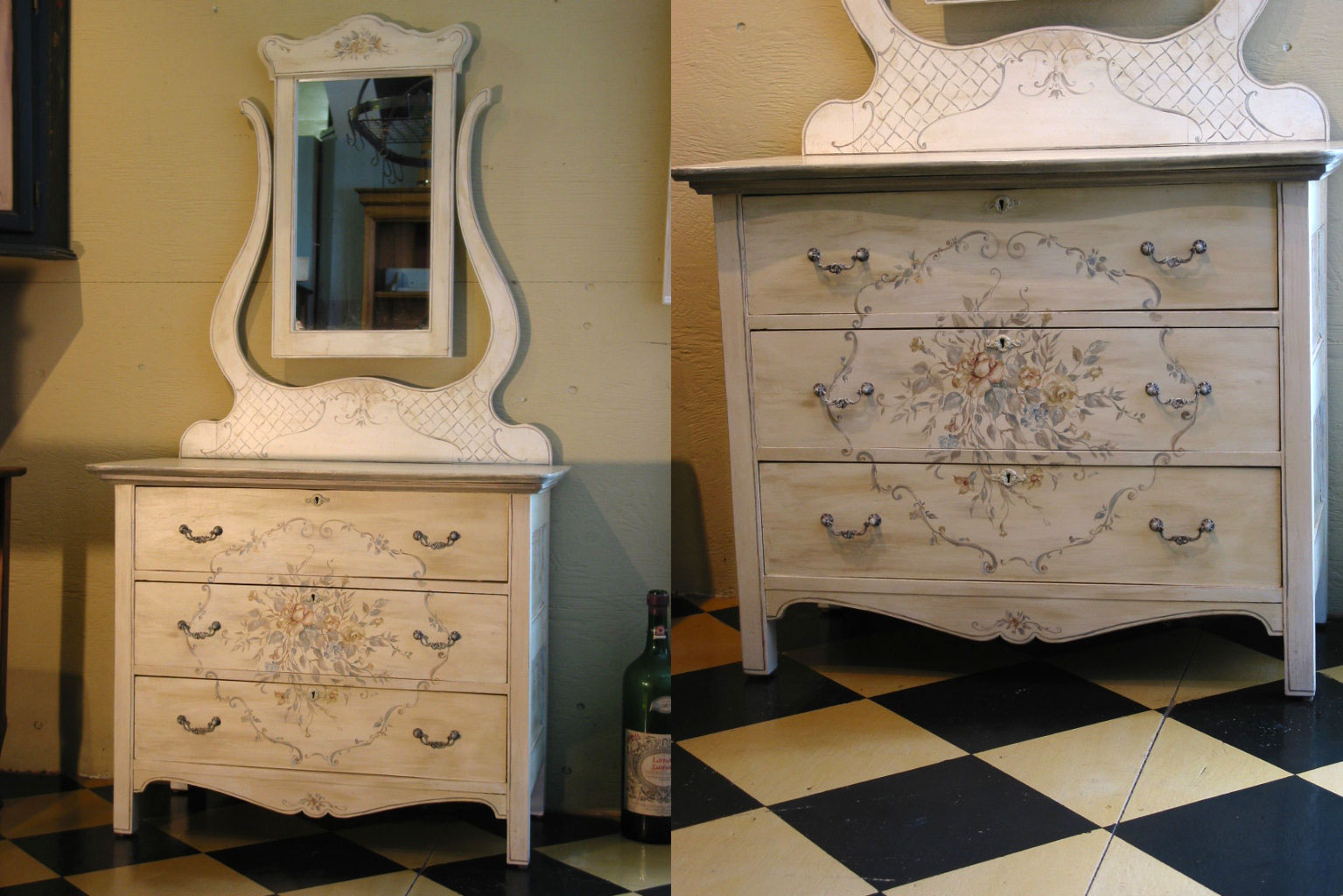




0 thoughts on “How Do Concave And Convex Mirrors Work”